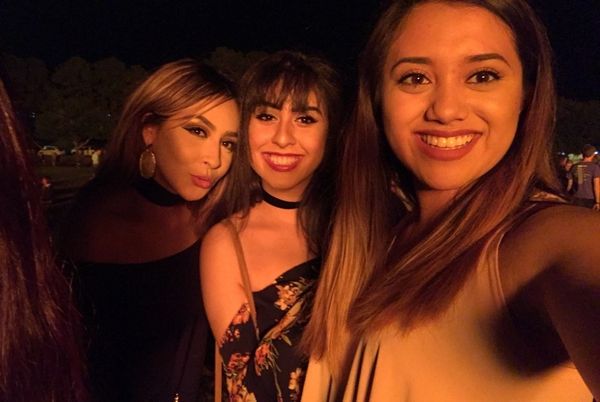Last week was a crazy week at Dartmouth, so I couldn't do as much research on the neurobiology of love as I wanted, and it turns out there's a lot more interesting brain chemistry behind goony-eyed couples.
I finally found a 2012 review of the scientific literature on the neurobiological roots of romantic love, aptly titled: "Love is more than just a kiss: a neurobiological perspective on love and affection." As I mentioned in my previous article on this subject, love does make some sense for our species from an evolutionary perspective. However, a researcher named Fisher proposed in 1992 that adult pair-bonds (couples) are formed for approximately four years, based on her observations of divorce rates across cultures after four years of marriage. Individuals can then move on to "pair-bond" with other adults. Perhaps this makes sense in terms of reproduction: once the child has reached four years of age, they have become a lot more independent, and require less care. Then, the adults can move on and reproduce with others in order to better spread their genes in the gene pool. Something to consider for couples in long-term relationships. Romantic love is also believed to be an extension of mother-infant attachment, which makes sense because it seems that both relationships, between potential parents and adults and children, seem to be geared towards the survival of the offspring. Essentially, we fall in love for our children, which makes sense evolutionarily.
The question then becomes: what are the neurological mechanisms behind love? All emotions are regulated by the endocrine system, and this includes love. Oxytocin and vasopressin have been shown to be involved in love through numerous studies. Oxytocin triggers muscle contractions during birth and milk release during breast feeding: the basics for new mothers. Vasopressin is generally associated with cardiovascular function and blood pressure maintenance. These hormones have also been associated with pair-bonding in prairie voles. Scientists found that when oxytocin and vasopressin are blocked from release, voles become promiscuous and no longer have partner preferences. It therefore follows that, in both voles and humans, oxytocin and vasopressin are associated with monogamy. This may have to do with the fact that both hormones can cause dopamine, another hormone, to be released. Dopamine is part of the reward system. Individuals are rewarded by the experience of love and therefore crave it. It can be similar to the feeling of addiction, and several studies have actually compared falling in love to drug addiction, such as one conducted in 2010 called "Is love passion an addictive disorder?", which argues that "love addiction" can be a legitimate disorder due to the pleasure and reward associated with it. In terms of monogamy, though, if we return to the prairie voles once more, studies have shown that they can prefer one partner after only interacting with them once, but this is only possible if dopamine is released.
Serotonin is yet another element in the chemical makeup of love, except its levels are particularly low in the early stages of love. Early love has many similarities to psychiatric disorders such as obsessive-compulsive disorder (OCD), depression, and anxiety, one of which is serotonin depletion. The first stages of love are chemically very similar to obsessive behaviors, which makes sense when we think of young couples who can't take their eyes off each other. In addition to cortisol, as discussed in my previous article, nerve growth factor (NGF) and testosterone also play a role in romantic love. NGF is a neurotrophin, a protein involved in neuron function, and have been shown to be significantly correlated with the strength of feelings when in love, basically the intensity of love. Interestingly, testosterone, a steroid hormone produced by both men and women, has opposite effects in both men and women in a new relationship, with reduced levels in men but elevated levels in women. This effect fades after 12-24 months. Exactly how testosterone influences romantic love, however, is still under scientific scrutiny.
The brain activity of those in love mirrors the chemical activity. Many activated regions, such as the hippocampus, are associated with the brain reward system and high concentrations of dopamine. There are also several areas that are deactivated for couples in love, as compared to single individuals or long-term couples. For example, the amygdala, an area associated with experiencing fear, is deactivated.
For the most part, this kind of brain activity is associated with the initial stage of falling in love, but there are actually several phases, proposed by Sternberg as the "Triangular Theory of Love." Phase 1 is Being in love, which is highly passionate, intimate, and exciting, and is relatively short, lasting around half a year. Phase 2 is called Passional love, and it lasts anywhere from several months to a year, and is dominated by feelings of safety and calmness, that feeling of stability in a relationship. Phase 3 is Companionate love, and it usually comes several years after Passional love. In this phase, there is a decrease in passion, but intimacy and commitment continue, and it is chemically very similar to friendship. And then there's the breakup, which, if it happens, has been shown to (rather predictably) increase stress levels.
Love is complicated, and though its origin has been debated for centuries, at least some of the feeling associated can certainly be rooted in the brain. It's complicated and stressful, full of pleasure and anxiety, so I think we can be a little more forgiving of young couples who can't take their eyes off one another. It's not their fault; it's their brains.











































